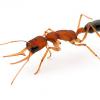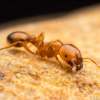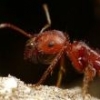Idk if I've posted here yet, but here's a new list:
Species found (in my old backyard in Washington, and my current backyard in Tennessee):
- Aphaenogaster lamellidens (TN)
- Aphaenogaster occidentalis (WA)
- Brachymyrmex sp. 1 (TN)
- Brachymyrmex depilis (TN, WA)
- Brachyponera chinensis (TN)
- Camponotus americanus (TN)
- Camponotus castaneus (TN)
- Camponotus caryae (TN, WA)
- Camponotus chromaiodes (TN)
- Camponotus decipiens (TN)
- Camponotus modoc (WA)
- Camponotus nearcticus (TN, WA)
- Camponotus noveaboracensis (TN)
- Camponotus pennslyvanicus (TN)
- Camponotus snellingi (TN)
- Camponotus subbarbatus (TN)
- Colobopsis impressa (TN)
- Colobopsis obliqua (TN)
- Colobopsis mississippiensis (TN)
- Crematogaster ashmeadi (TN)
- Crematogaster cerasi (TN)
- Crematogaster lineolata (TN)
- Crematogaster minutissima (TN)
- Crematogaster missouriensis (TN)
- Dorymyrmex cf. insanus (WA)
- Dorymyrmex brueni (TN)
- Forelius sp. 1 (TN)
- Formica argentea (TN)
- Formica dolosa (TN)
- Formica incerta (TN)
- Formica cf. lasioides (WA)
- Formica neogagates (WA)
- Formica neorufibarbis (WA)
- Formica obscuripes (WA)
- Formica obscuriventris (TN)
- Formica pacifica (WA)
- Formica pallidefullva (TN)
- Formica subsericea (TN)
- Hypoponera inexorata (TN)
- Hypoponera opacior (TN)
- Leptothorax sp. 1 (WA)
- Monomorium ergatoigynea (TN)
- Monomorium minimum (TN)
- Myrmecina americana (TN, WA)
- Myrmica americana (TN)
- Myrmica incompleta (TN)
- Myrmica cf. rubra (WA)
- Myrmica sp. 1 (WA)
- Neivamyrmex nigrescens (TN)
- Pheidole bicarinata (TN)
- Pheidole dentata (TN)
- Pheidole sp. 1 (WA)
- Pheidole sp. 2 (TN)
- Pheidole tepicana (TN)
- Pheidole tysoni (TN)
- Proceratium crassicorne (TN)
- Proceratium creek (TN)
- Proceratium pergandei (TN)
- Solenopsis carolinensis (TN)
- Solenopsis invicta x rchrti (TN)
- Solenopsis molesta (TN, WA)
- Solenopsis cf. texana (TN)
- Stigmatomma pallipes (TN)
- Strumigenys louisianae (TN)
- Strumigenys pilinasis (TN)
- Strumigenys membranifera (TN)
- Temnothorax ambiguus (TN)
- Temnothorax americanus (TN)
- Temnothorax curvispinosus (TN)
- Temnothorax cf. rugulatus (WA)
- Tetramorium immigrans (TN, WA)
- Trachymyrmex septentrionalis (TN)
Edited by TennesseeAnts, May 18 2021 - 7:45 AM.

























